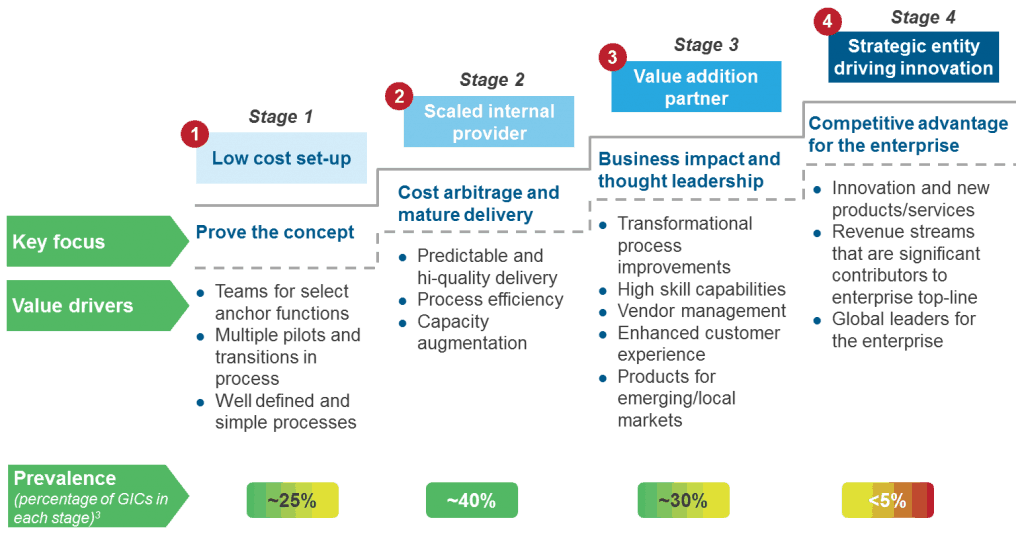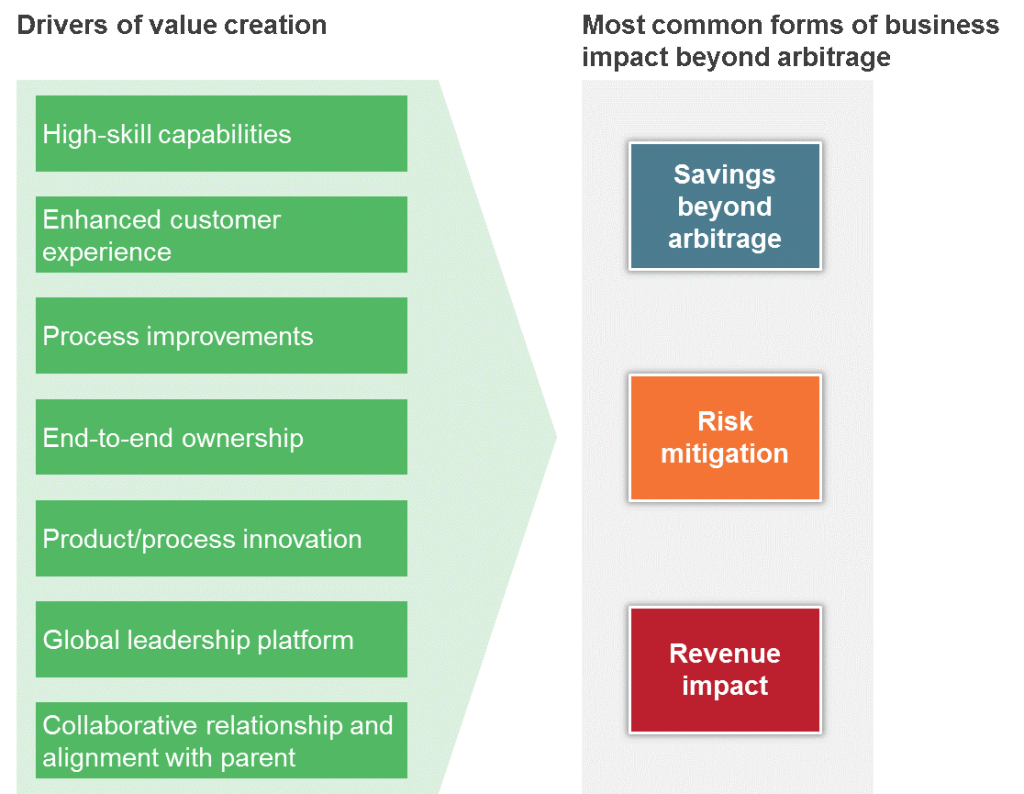
The GIC model has evolved significantly over the last decade, and is gearing up for the third wave of evolution – GIC 3.0, as some are calling it – driven by GICs’ strong desire to move away from the “arbitrage-first” delivery model towards a “digital-first” model.
Everest Group describes the journey to mature GICs as progressing through four different stages.
Journey to GIC maturity

Our research shows that best-in-class – or Stage 4 – GICs deliver up to six to eight times incremental value beyond arbitrage. Yet, while many of our engagements over the last few years have made it clear that most Global 1,000 GICs deliver value beyond arbitrage, very few track and measure their impact. When they do, it’s typically in a piecemeal, selective manner. Thus, their parent perceives that they are delivering limited business value, beyond arbitrage, to the enterprise.
By educating their parent on their impact, GICs can improve their credibility, and build a case to secure support for expanding their role.
So how can GICs measure and articulate the value they deliver?
We believe that putting a dollar number to the business impact is the most objective and effective way for GICs to showcase their true worth. The framework we use maps value drivers linked to savings, risk, and revenue, quantifying all forms of impact created by the GIC.

Here’s an example: a U.S. company’s GIC was able to prove to its parent that it delivered US$20 to 22 million in overall business impact, compared to incremental cost arbitrage of US$4 to 6 million, through increased effectiveness, greater efficiency, and revenue growth. This helped the GIC secure the parent’s buy-in on increasing the scope of functions currently delivered out of their GIC.
A comprehensive quantification facilitates measuring the overall business impact across businesses/LOBs supported by the GIC. A GIC can use these results to:
- Enable better understanding of its impact/role in the enterprise
- Guide internal thinking on prioritization of value-add opportunities
- Map its maturity to the market
- Achieve greater sponsorship from parent stakeholders
Contact us about Everest Group’s business impact quantification framework, and learn more about our research on in-house delivery models.










